Information Objects
IV Objects are represented using a class diagram.
Table 4 Notation for information object diagrams
| Figure
|
Description
|
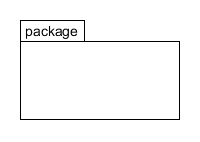
|
A package, in UML notation, is a grouping element. Package is used "to group elements, and to provide a namespace for the grouped elements".
A package may contain other packages, thus providing for a hierarchical organization of packages.
Classes, objects, use cases, components, nodes, node instances etc. can all be organized as packages, enabling a manageable organization of the elements of UML models.
|
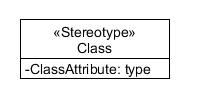
|
Classes are used to represent information objects in the RM.
Classes can have additional compartments to express properties (called attributes) and behaviours (called methods). Leaving the compartments blank means that the behaviour and attributes are undefined at the time of creating the diagram.
Name tag indicates the name of the class. Typically, classes are named using no spaces in camelcase.
The stereotype indicates the namespace where the class is grouped. Sometimes the stereotype can be an image. The image can be used in place of the figure. For ODP, the stereotype for information object is an “i” icon with a tag on top:
|

|
Generalisation relationship indicates that one of the two related classes (the subclass) is considered to be a specialized form of the other (the super class).
Generalisation is represented with an arc with a blank triangle decoration. The blank triangle points to the super class and the undecorated end is connected to the subclass.
The generalization relationship is also known as the inheritance or "is a" relationship.
|

|
Aggregation relationship indicates an association that represents a part-whole or part-of relationship.
Aggregation is represented with an arc with a blank rhombus decoration. The blank rhombus shape indicates the composite and the undecorated end of the arc is the component.
|
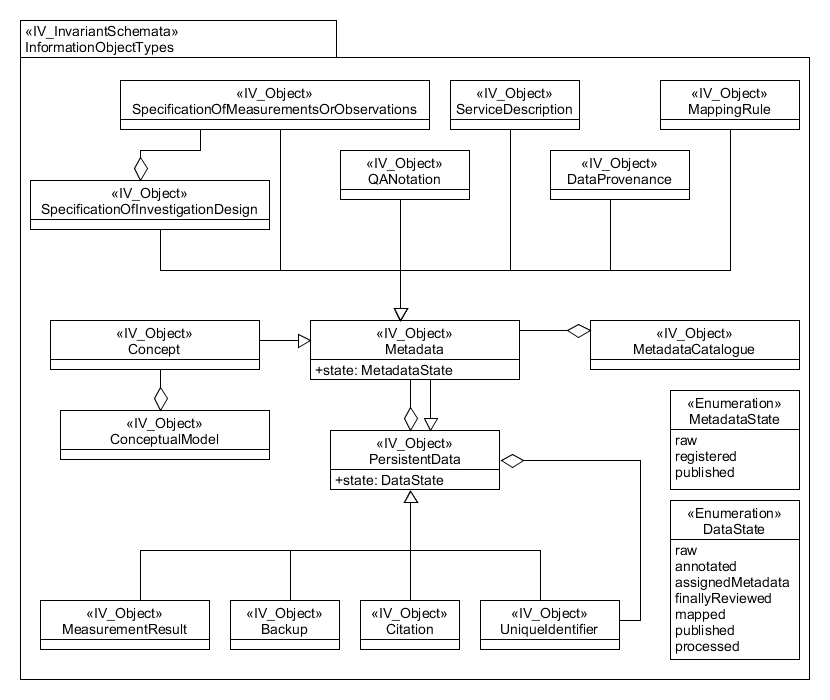
Figure 4 Example of an IV Object diagram
In the example diagram the package represents the collection of all information objects described by the ENVRI RM. The stereotype for the package is invariant schemata, which indicates that these are the parts of the model that are stable. The main objects are persistent data and metadata. The RM also provides a detailed description of each object in the text.
Information Actions
IV Actions are represented using an activity diagram with packages and activities
Table 5 Notation for action type diagrams
| Figure
|
Description
|

|
A package, in UML notation, is a grouping element. Package is used "to group elements, and to provide a namespace for the grouped elements".
A package may contain other packages, thus providing for a hierarchical organization of packages.
Classes, objects, use cases, components, nodes, node instances etc. can all be organized as packages, enabling a manageable organization of the elements of UML models.
|
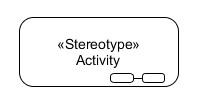
|
Activities are used to represent action in the RM.
Name tag indicates the name of the action. Actions are named using a short phrase that describes the event or action being represented.
The small decoration in the box indicates that the action is complex and can be subdivided into smaller tasks.
A stereotype can be used to indicate the namespace where the activity is grouped. Sometimes the stereotype can be an image. The stereotype image can be used in place of the figure. For ODP, the stereotype for information action is an arrow icon with a lowercase “i”:
|
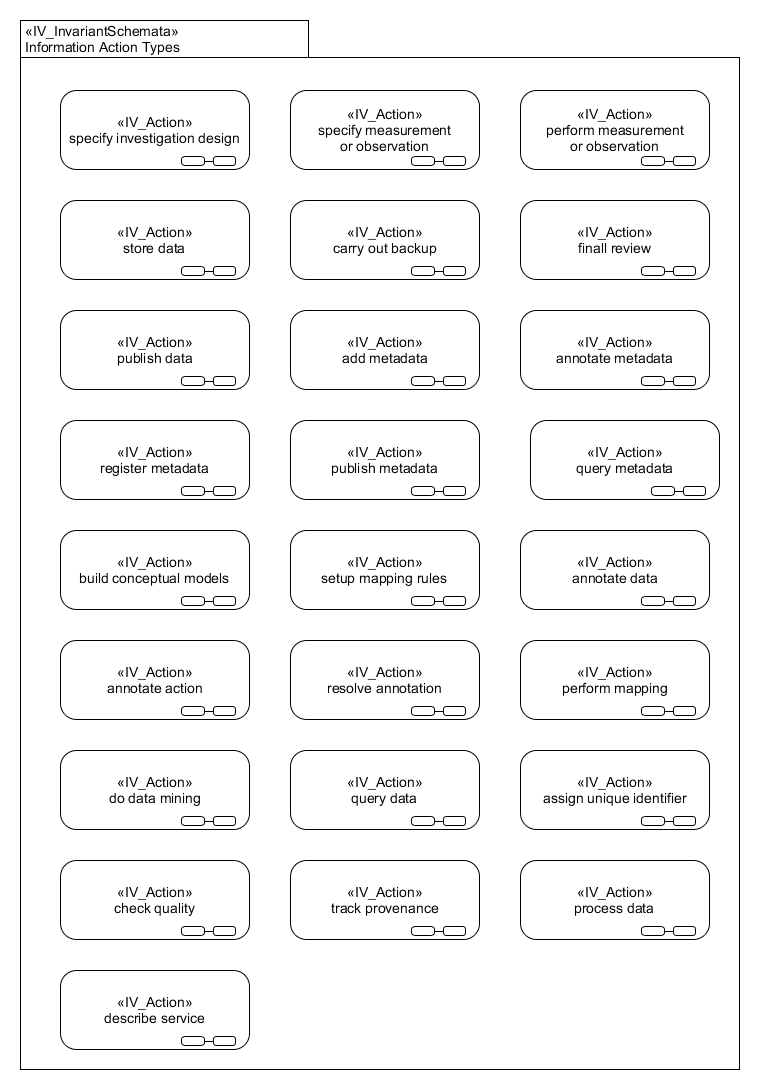
Figure 5 Example of an IV Action Types diagram
In the example diagram the package represents the information action types described by the ENVRI RM. The stereotype for the package is invariant schemata, which indicates that these are the parts of the model that are stable. The RM also provides a detailed description of each action in text.
Information Object Instances
IV Objects instances are represented using an object diagram. The type of diagram is similar to the class diagram with the difference that the entities represented are objects not classes. Object instances have a specific state and this can change depending on the moment when the object is observed. Object instances are useful for representing the dynamic nature of the systems.
Table 6 Notation for information object instances diagrams
| Figure
|
Description
|

|
A package, in UML notation, is a grouping element. Package is used "to group elements, and to provide a namespace for the grouped elements".
A package may contain other packages, thus providing for a hierarchical organization of packages.
Classes, objects, use cases, components, nodes, node instances etc. can all be organized as packages, enabling a manageable organization of the elements of UML models.
|

|
Classes are used to represent information objects in the RM.
Classes can have additional compartments to express properties (called attributes) and behaviours (called methods). Leaving the compartments blank means that the behaviour and attributes are undefined at the time of creating the diagram.
Name tag indicates the name of the class. Classes are named using no spaces and capitalising the first letter of each word that makes up the name, camelcase.
The stereotype indicates the namespace where the class is grouped. Sometimes the stereotype can be an image. The image can be used in place of the figure. For ODP, the stereotype for information object is an “i” icon with a tag on top:
|

|
Objects are used to represent object instances in the RM.
Name tag indicates of the entity
The set of attributes with a value assigned characterises the state of the object.
The stereotype indicates the namespace where the object is grouped. Sometimes the stereotype can be an image. The image can be used in place of the figure. For ODP, the stereotype for information object instance is an “i” icon:
|

|
Aggregation indicates an association that represents a part-whole or part-of relationship.
Aggregation is represented with an arc with a blank rhombus decoration. The end with the blank rhombus indicates the composite and the other connects to the component.
|
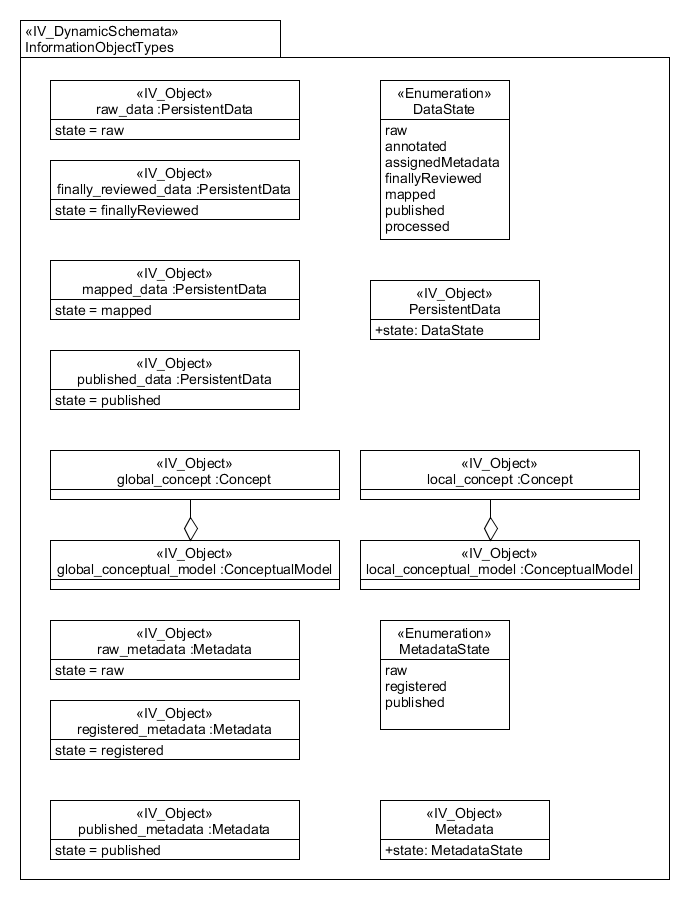
Figure 6 Example of an IV Object diagram
In the example diagram the package represents a collection of some information object instances. The stereotype for the package is dynamic schemata, which indicates that these are the parts of the model that can change depending on when the system is observed. The diagram presents four sample instances of persistent data objects and three examples of metadata objects. The diagram also includes the class definitions of persistent data and metadata objects for reference
State Diagrams
IV Object instances can have different states during their lifespan. The basic information objects persistent data and metadata have specific sets of states associated to them. The state changes, together with the IV Activities can be used to model the behaviour of data as it is managed by the RI. For this we use a state machine diagram. The main components of state machine diagrams are activity frames, states, activities, and pseudo-states








